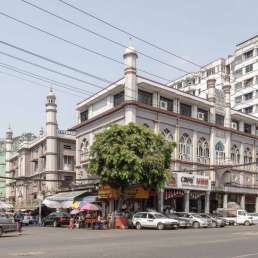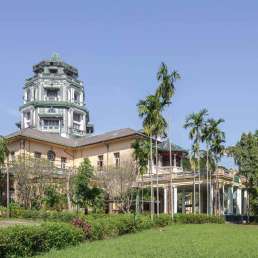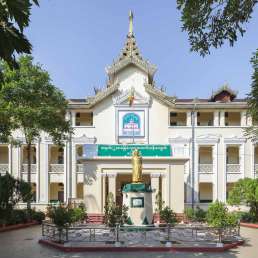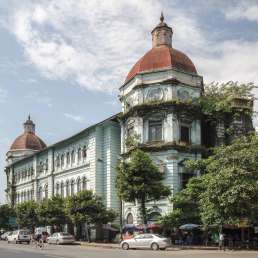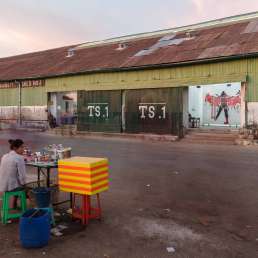Address: Pyay Road / Ahlone Road
Year built: 1986-1996
Architect: Public Works Department
Most visitors to Yangon—and residents, for that matter—have probably not had the chance to take a close look at the local parliament building (Hluttaw). Sometimes known as the “Congress Building”, it is set back deep from the busy thoroughfares of Pyay and Ahlone Roads. Already difficult to observe through the security fence that lines the perimeter, the tall trees of the generous park area that surrounds the building further shield it from view.
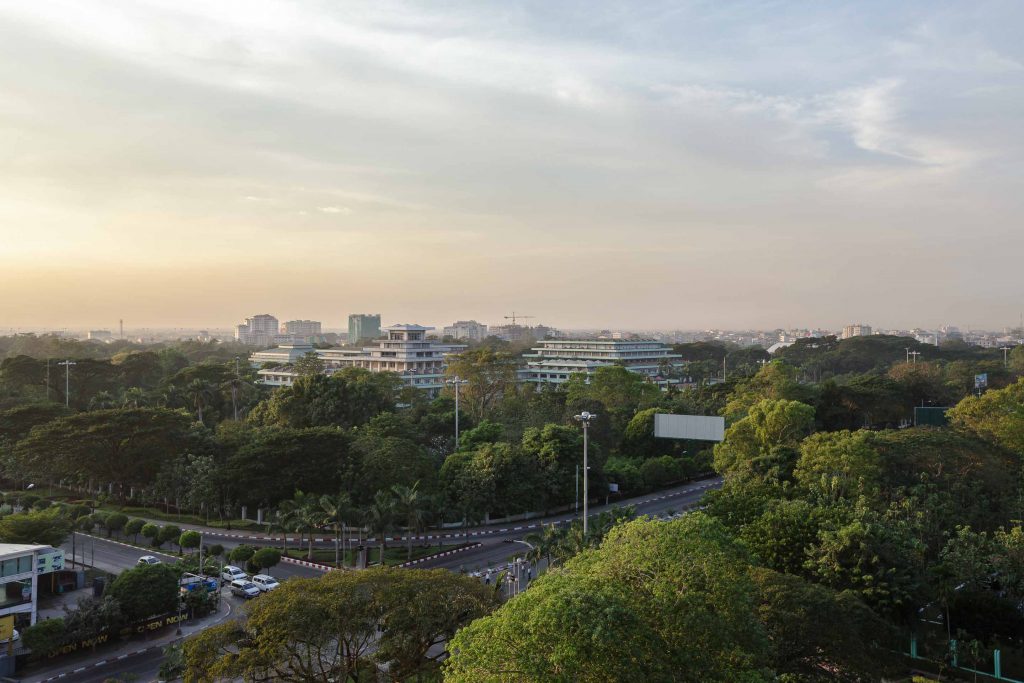
These photos taken from the Yangon International Hotel, however, reveal an austere structure that displays perhaps one of the bulkiest and most rectilinear interpretations of temple design. This can be seen for example in the tallest wing, measuring six storeys. Its tiered structures mimic that of the traditional pyatthat roofs. You can also make out the use of the perforated wall designs often seen in modern Yangon architecture, for example at the U Thant Mausoleum. Throughout the structure, the roofing consists of a gridded (and rather odd) series of consecutive low roofs. The roof of the westernmost wing sets itself apart with a design that vaguely echoes that of East Asian temples. Aerial views reveal a spacious and grassy internal courtyard, on the model of the wide park and fountain facing the building on the Pyay Road side.
Traditionally, the word hluttaw referred to the council of advisers to the court of a Burmese monarch. The term was repurposed during colonial days to refer to a parliamentary structure. The British Parliament’s Government of Burma Act, in 1935, separated Burma from British India and provided for the creation of a local parliament inside the Secretariat.
This parliament consisted of a 36-seat Senate and a 132-seat House of Representatives. Some seats were reserved for specific political constituencies, reflecting Rangoon’s cosmopolitanism at the time. Indians, Europeans and the “Anglo–Burmese” all had their quota of seats, as did labour organisations and the wide range of chambers of commerce operating in the city, from the Chinese to the Chettiars. The Karen also had seats, although other ethnic minorities, such as the Shan, were not entitled to elect members of parliament. (In a reminder that the Burmese military have in many ways perpetuated the habits of the country’s former British rulers, half the Senate seats were nominated by the Governor directly, not unlike the 25 per cent of seats reserved for the army in Myanmar’s current parliament.)
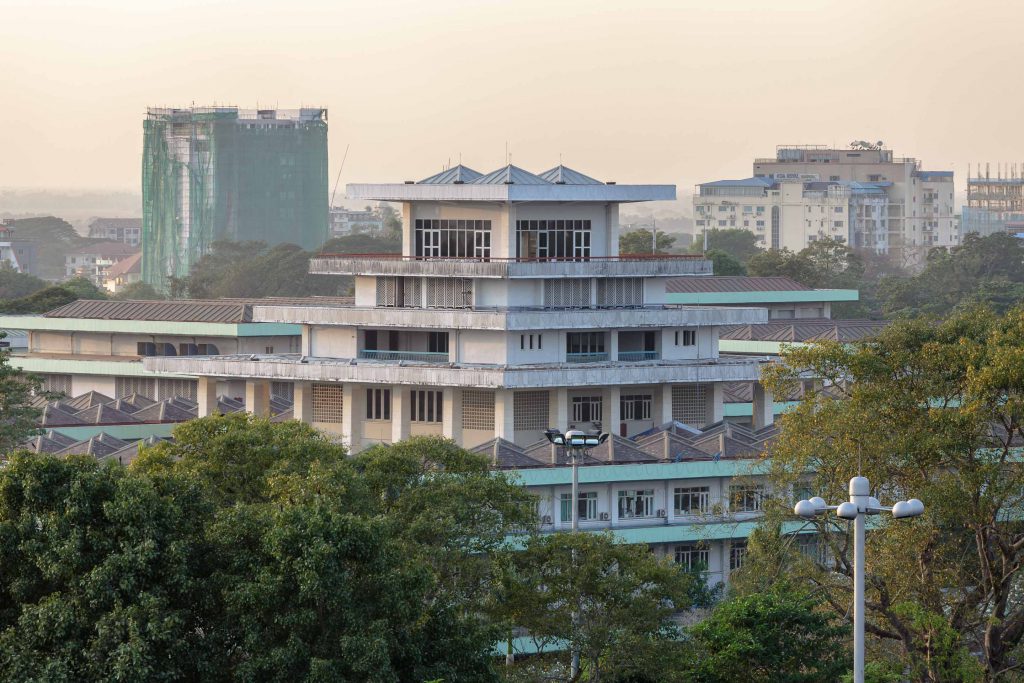
The parliament remained inside the Secretariat grounds after independence in 1948, and sat there until Ne Win’s coup in 1962. The country did not have a functional parliament from 1962 until 2011, although an army-appointed legislative branch did operate from 1974 until 1988. This building was a government office until 2011, when it became the regional Hluttaw for Yangon. The national Hluttaw sits in Naypyidaw.
